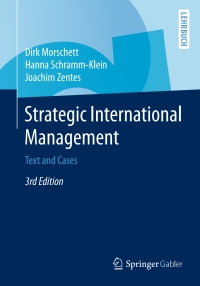Answered step by step
Verified Expert Solution
Question
1 Approved Answer
can you write a answer from pic 1 Green Supply Chain Management Read this article to become familiarized with the concepts in green supply chain
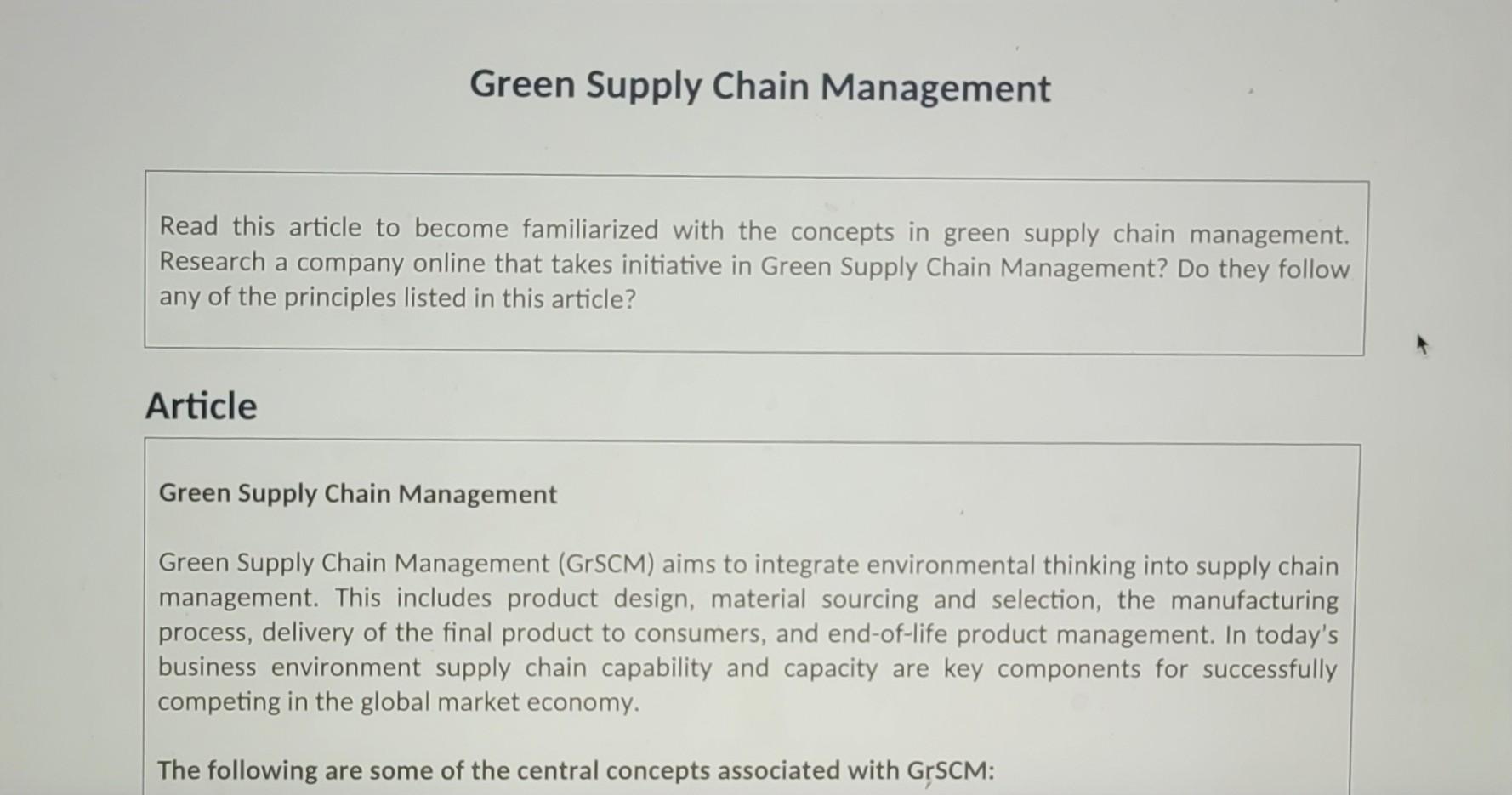
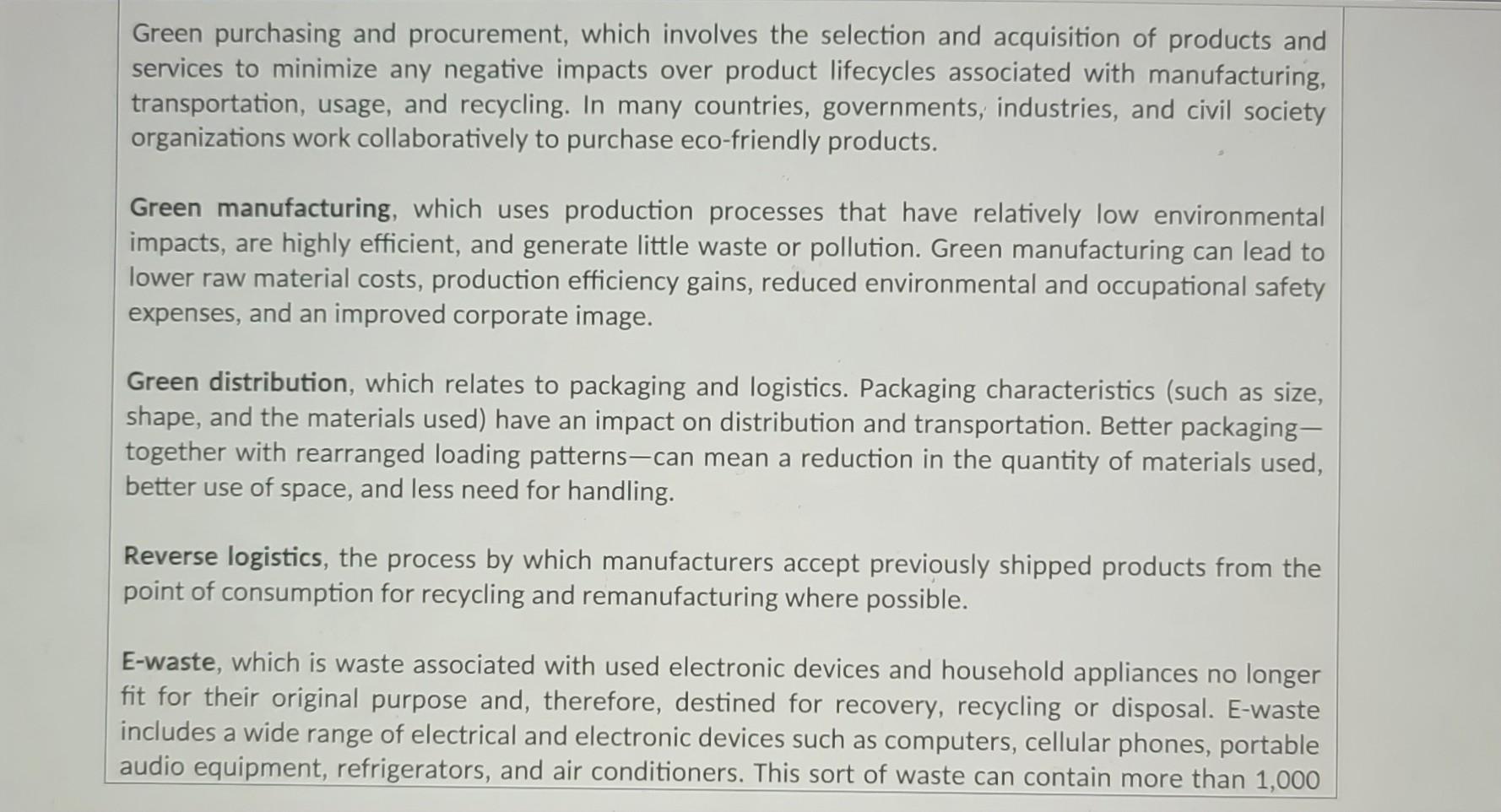
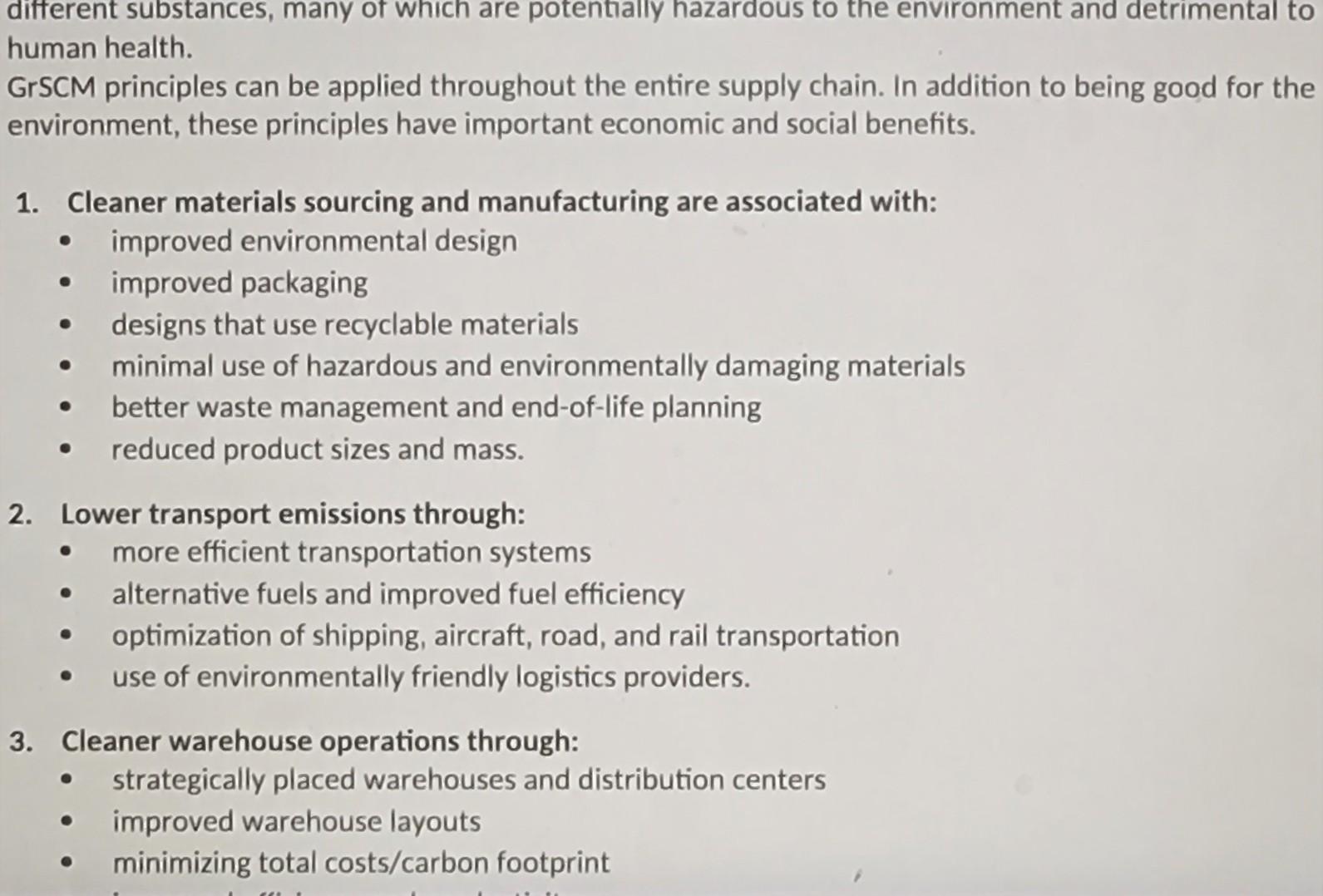
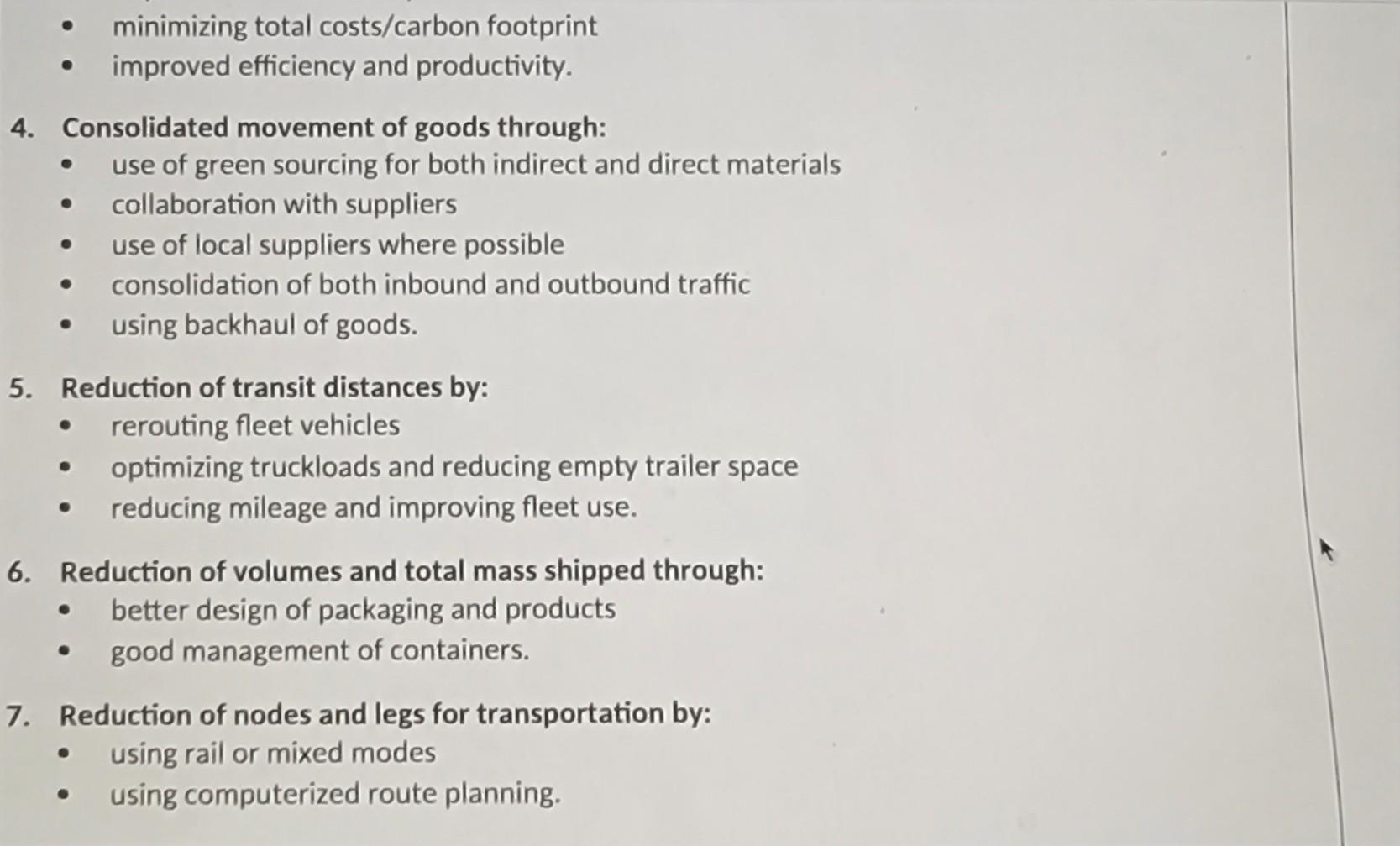

can you write a answer from pic 1
Green Supply Chain Management Read this article to become familiarized with the concepts in green supply chain management. Research a company online that takes initiative in Green Supply Chain Management? Do they follow any of the principles listed in this article? Article Green Supply Chain Management Green Supply Chain Management (GrSCM) aims to integrate environmental thinking into supply chain management. This includes product design, material sourcing and selection, the manufacturing process, delivery of the final product to consumers, and end-of-life product management. In today's business environment supply chain capability and capacity are key components for successfully competing in the global market economy. The following are some of the central concepts associated with GrsCM: Green purchasing and procurement, which involves the selection and acquisition of products and services to minimize any negative impacts over product lifecycles associated with manufacturing, transportation, usage, and recycling. In many countries, governments, industries, and civil society organizations work collaboratively to purchase eco-friendly products. Green manufacturing, which uses production processes that have relatively low environmental impacts, are highly efficient, and generate little waste or pollution. Green manufacturing can lead to lower raw material costs, production efficiency gains, reduced environmental and occupational safety expenses, and an improved corporate image. Green distribution, which relates to packaging and logistics. Packaging characteristics (such as size, shape, and the materials used) have an impact on distribution and transportation. Better packagingtogether with rearranged loading patterns-can mean a reduction in the quantity of materials used, better use of space, and less need for handling. Reverse logistics, the process by which manufacturers accept previously shipped products from the point of consumption for recycling and remanufacturing where possible. E-waste, which is waste associated with used electronic devices and household appliances no longer fit for their original purpose and, therefore, destined for recovery, recycling or disposal. E-waste includes a wide range of electrical and electronic devices such as computers, cellular phones, portable audio equipment, refrigerators, and air conditioners. This sort of waste can contain more than 1,000 difterent substances, many of which are potentially hazardous to the environment and detrimental to human health. GrSCM principles can be applied throughout the entire supply chain. In addition to being good for the environment, these principles have important economic and social benefits. 1. Cleaner materials sourcing and manufacturing are associated with: - improved environmental design - improved packaging - designs that use recyclable materials - minimal use of hazardous and environmentally damaging materials - better waste management and end-of-life planning - reduced product sizes and mass. 2. Lower transport emissions through: - more efficient transportation systems - alternative fuels and improved fuel efficiency - optimization of shipping, aircraft, road, and rail transportation - use of environmentally friendly logistics providers. 3. Cleaner warehouse operations through: - strategically placed warehouses and distribution centers - improved warehouse layouts - minimizing total costs/carbon footprint - minimizing total costs/carbon footprint - improved efficiency and productivity. 4. Consolidated movement of goods through: - use of green sourcing for both indirect and direct materials - collaboration with suppliers - use of local suppliers where possible - consolidation of both inbound and outbound traffic - using backhaul of goods. 5. Reduction of transit distances by: - rerouting fleet vehicles - optimizing truckloads and reducing empty trailer space - reducing mileage and improving fleet use. 6. Reduction of volumes and total mass shipped through: - better design of packaging and products - good management of containers. 7. Reduction of nodes and legs for transportation by: - using rail or mixed modes - using computerized route planning. - providing incentives to consumers to return products - designing and employing reverse logistics systems. Monitoring and reducing carbon footprints makes good business sense because it eliminates waste and reduces costs. The exercise to reduce carbon footprints can also help organizations when choosing efficient business partners; it can also help them be better prepared, by mitigating risks associated with sudden changes in energy and fuel prices. Additionally, a lower carbon footprint can lead to an improved corporate brand and provide an advantage over competitors. Uitimately, no green initiative will succeed unless it has proven value such as: - a better economical outcome for the organization - improved benefits for customers - marketing advantages for its products and services. It is important for organizations to create metrics to determine the environmental impacts of their supply chains. With metrics in place, ideal baselines can be set and performance optimized. Successful organizations often work on incremental solutions to gradually improve environmental performance, while minimizing the burden of change in other areas. To understand fully the trade-offs inherent in their choices, executives must be able to analyze the entire value chain of a product or service in terms of cost and environmental impact. In doing so, they can make certain that the various components in the chain interact in ways that benefit the whole systemStep by Step Solution
There are 3 Steps involved in it
Step: 1

Get Instant Access to Expert-Tailored Solutions
See step-by-step solutions with expert insights and AI powered tools for academic success
Step: 2

Step: 3

Ace Your Homework with AI
Get the answers you need in no time with our AI-driven, step-by-step assistance
Get Started


